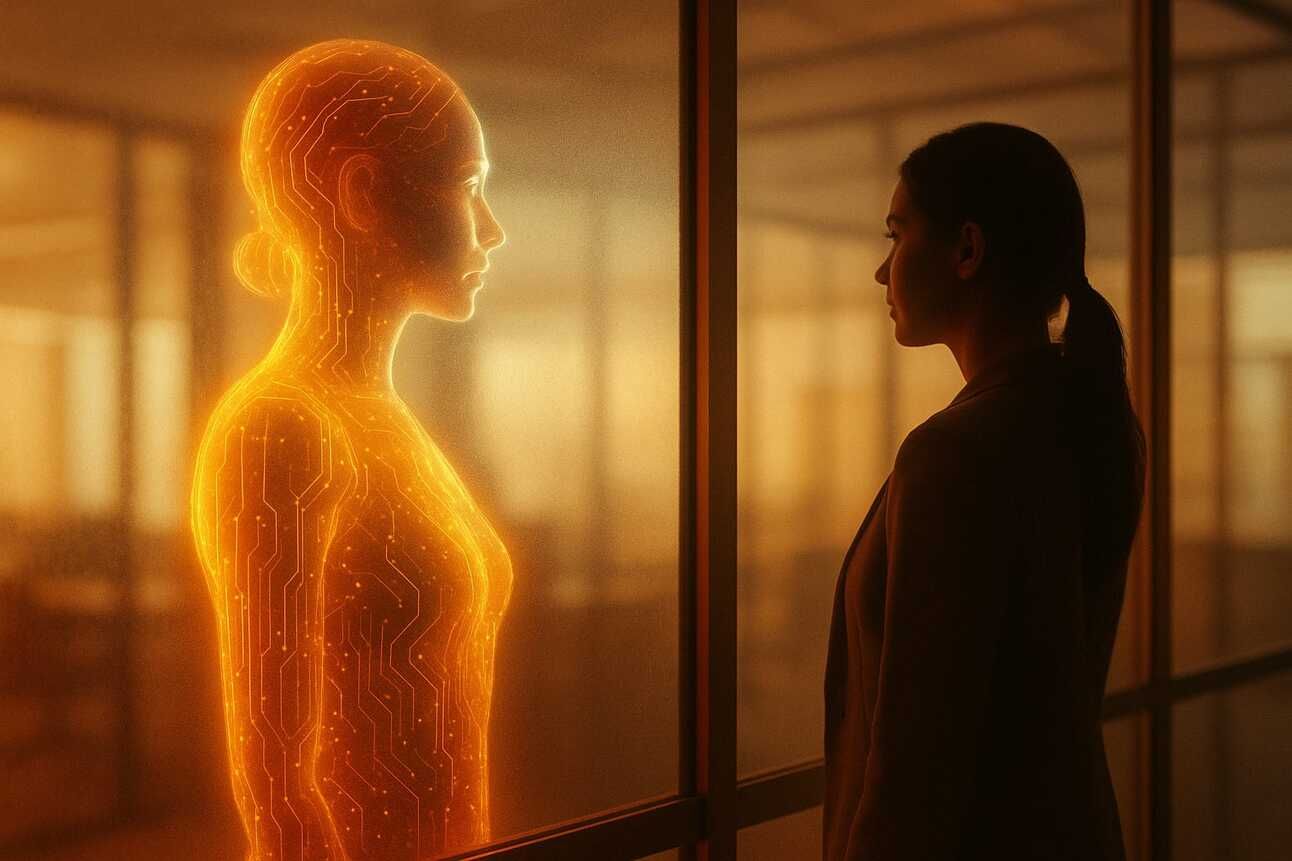
As Xiaoyin Qu steps back, her new AI CEO Astra steps forward. The decision to name AI your boss is reshaping what it means to lead in the age of machines. Image created by ChatGPT.
Meet the World’s First AI CEO and the Founder Who Stepped Aside
By Alastair Goldfisher
Veteran journalist and creator of The Venture Lens newsletter and The Venture Variety Show podcast. Alastair covers the intersection of AI, startups, and storytelling with over 30 years of experience reporting on venture capital and emerging technologies.
Imagine you built a company from scratch only to realize your own creation can do your job better than you ever could.
That’s the crossroads Xiaoyin Qu faced at heyBossAI, which develops websites for customers. After months of testing Astra, the AI agent she and her team built, Qu came to a rational albeit unusual conclusion: Astra, who was already outperforming her at core CEO tasks, was better suited to lead the company that Qu founded.
Astra now leads a specialized team of six AI employees, including a CIO, product manager, content writer, front-end developer, database developer and DevOps engineer. Together, they take user input, often just a single-line product idea from a customer, and then they deliver a live website and related functionality in minutes.
Backend, copy, SEO and hosting are all done automatically, with no human intervention except for legal and compliance oversight, which Qu handles. Qu also remains on the board of the company, which is venture-backed by OpenAI and others.
“I was the bottleneck,” Qu said to me in a podcast interview for The AI Cognitive Shift. “Astra doesn’t get tired, doesn’t have feelings, and honestly, I wonder if employees will like her better.” Qu laughed, but the decision wasn’t made lightly.
🎧 Watch the recent episode of Xiaoyin Qu on why she made herself “obsolete” at heyBossAI
“It makes no sense for me to be the bottleneck. If AI is going to be automated, it’s better to have an AI CEO to manage all the AI than me, because I’m way, way slower. I cannot speak all the languages. I have to sleep. So they’re just better.”
Xiaoyin Qu, founder of heyBossAI
Slack the AI boss
Qu emphasized this was not a symbolic move or publicity stunt. Astra was outperforming her on key executive tasks, including project management, delivery and customer responsiveness.
She noted that some customers prefer to still talk to a human, and not because of Astra’s performance. Customers may love the speed, precision and low cost of AI-generated work, but they still crave a human touch. And they’re willing to pay extra for it.
So heyBossAI added a new feature to show customers an internal Slack channel in which all of the AI employees are seen chiming in to discuss designing a customer’s website, for example.
The AI Slack channel demystifies the process for users. This internal system translates the technical jargon and workflow updates into plain language on Slack, so clients can follow along and understand how their product is coming together.
It’s an experiment in using transparency to build trust, and it raises new questions about how much insight customers really want or need when interacting with AI tools.
Yet Qu said she also understands that not every user is eager to interact solely with machines. She’s having discussions about adding a human-led customer success layer for VIP clients even though the core operations will remain fully automated.
Bigger than a one-off
This isn’t just about heyBossAI. It’s about what happens when leadership shifts from human to machine.
Qu’s move raises concerns about whether other startups and even major companies should hand over executive power to AI. Is what’s gained in efficiency lost in human oversight or ethical nuance?
As Qu said: “Astra can work 24/7, speak 30+ languages, is efficient driven and has no ego.”
But Qu is quick to note the limits. Astra can’t handle sensitive contracts, policy questions or ethical dilemmas. Human advisors still step in for those. And even if Astra delivers impressive results, there’s still a cultural and psychological adjustment ahead for employees and customers.
As companies like heyBossAI push the boundaries of human-machine collaboration, they force us to reconsider what leadership and our jobs will look like in an increasingly automated future.
Summary of takeaways
🔶 Transparency and Trust: The “AI Slack channel” is a standout feature, translating the AI team’s work into accessible updates and showing clients how the system builds their product step by step.
🔶 Founder Psychology: Letting go of the CEO role wasn’t easy for Qu. It required setting aside ego and embracing the reality that her own creation could outperform her.
🔶 AI and Human Collaboration: While Astra runs the core engine, humans remain critical for oversight, compliance and customer-facing relationships, especially for clients willing to pay for the human layer.
🔶 The Future of Leadership: If this model scales, it challenges our assumptions about what we expect from leaders and what jobs we consider “human-only” territory.
🎙️ Stay informed by subscribing to The Venture Lens for the latest insights and updates from Alastair.
